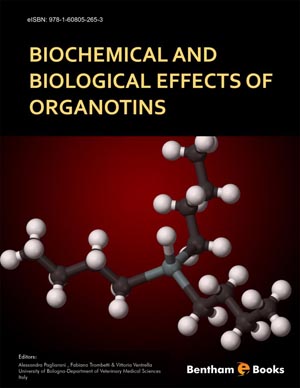Abstract
Apoptosis, a specific type of programmed cell death, is characterized by cell shrinkage, nucleus condensation and fragmentation, plasma membrane blebbing and final engulfment by neighboring cells or professional phagocytes. The molecular mechanisms of organotin-induced apoptosis, which involve a series of biochemical regulators and molecular interactions, have been extensively studied in different cell types but the apoptotic pathway mechanisms and signaling still remain unexplained in some detail. Apoptosis may be triggered and modulated by caspase-independent, and more frequently by caspase-dependent pathways. Pro-caspase activation is driven by death receptors, and/or by a mitochondrion-mediated mechanism. Although both pathways were described, the mitochondrial mechanism seems to be the most important one in organotin-induced apoptosis. Organotin compounds trigger cytoskeletal modifications and disruption of mitochondrial functions. Generally, the apoptotic pathway induced by organotins starts with their interactions with cellular components leading to perturbation of intracellular Ca2+ homeostasis, the latter especially triggered by endoplasmic reticulum stress, and intracellular Ca2+ concentration increase, cessation of ATP and reactive oxygen species production and loss of mitochondrial membrane potential. These events are followed by cytochrome c release from mitochondria to cytosol, apoptosome formation and final executioner caspase activation. The increase in intracellular Ca2+ level and the consequent mitochondrial cytochrome c release play critical steps in organotin-induced apoptosis. The process not only depends on cell type and sensitivity but also on organotin chemical characteristics and insult intensity. New and promising research on mechanisms of organotin-induced apoptosis is focused on the characterization of organotin interactions with apoptosis-related proteins and regulation of gene expression.






















